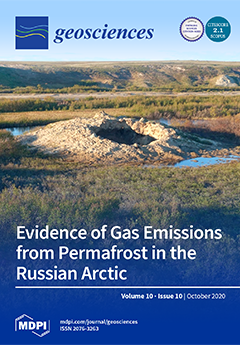The Arctic region is the most sensitive region to climate change. Hydrological models are fundamental tools for climate change impact assessment. However, due to the extreme weather conditions, specific hydrological process, and data acquisition challenges in the Arctic, it is crucial to select
[...] Read more.
The Arctic region is the most sensitive region to climate change. Hydrological models are fundamental tools for climate change impact assessment. However, due to the extreme weather conditions, specific hydrological process, and data acquisition challenges in the Arctic, it is crucial to select suitable hydrological model(s) for this region. In this paper, a comprehensive review and comparison of different models is conducted based on recently available studies. The functionality, limitations, and suitability of the potential hydrological models for the Arctic hydrological process are analyzed, including: (1) The surface hydrological models Topoflow, DMHS (deterministic modeling hydrological system), HBV (Hydrologiska Byråns Vattenbalansavdelning), SWAT (soil and water assessment tool), WaSiM (water balance simulation model), ECOMAG (ecological model for applied geophysics), and CRHM (cold regions hydrological model); and (2) the cryo-hydrogeological models ATS (arctic terrestrial simulator), CryoGrid 3, GEOtop, SUTRA-ICE (ice variant of the existing saturated/unsaturated transport model), and PFLOTRAN-ICE (ice variant of the existing massively parallel subsurface flow and reactive transport model). The review finds that Topoflow, HBV, SWAT, ECOMAG, and CRHM are suitable for studying surface hydrology rather than other processes in permafrost environments, whereas DMHS, WaSiM, and the cryo-hydrogeological models have higher capacities for subsurface hydrology, since they take into account the three phase changes of water in the near-surface soil. Of the cryo-hydrogeological models reviewed here, GEOtop, SUTRA-ICE, and PFLOTRAN-ICE are found to be suitable for small-scale catchments, whereas ATS and CryoGrid 3 are potentially suitable for large-scale catchments. Especially, ATS and GEOtop are the first tools that couple surface/subsurface permafrost thermal hydrology. If the accuracy of simulating the active layer dynamics is targeted, DMHS, ATS, GEOtop, and PFLOTRAN-ICE are potential tools compared to the other models. Further, data acquisition is a challenging task for cryo-hydrogeological models due to the complex boundary conditions when compared to the surface hydrological models HBV, SWAT, and CRHM, and the cryo-hydrogeological models are more difficult for non-expert users and more expensive to run compared to other models.
Full article





